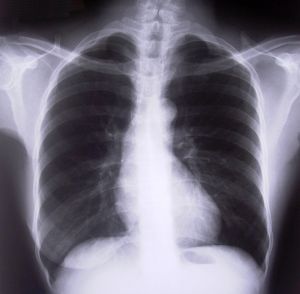The setting was right: a town in the Ohio River Valley with lots of birds hanging out in and around the attic. Unfortunately, it took a skin test at the college infirmary to help identify an odd collection of calcifications on an old X-ray. The verdict, 10 years after exposure, was an infection known as histoplasmosis.
Overview
According to MedicineNet.com, histoplasmosis is a fungal disease that primarily affects a patient’s lungs. It was identified in 1906. Around 250,000 new cases appear within the United States each year. The illness is also known as Ohio River Valley fever, with the greatest concentration of victims living in the Ohio, Missouri, and Mississippi River valleys.
The fungus responsible has been detected worldwide but primarily in river valleys of temperate areas as well as those of equatorial Africa. While the disorder also affects dogs, cats, and other mammals, it doesn’t transfer between those species and human beings. Several types of the infection exist, with effects from mild to life-threatening.
Causes
Spores in air a patient breathes while living or working around soil containing the fungus Histoplasma capsulatum cause the histoplasmosis infection, the Mayo Clinic reports. The fungus resides in the droppings of bats and certain birds. While farmers, landscapers, construction workers, and home remodelers are the individuals who most commonly come in contact with these droppings, anyone living in an affected river valley is susceptible.
Histoplasma capsulatum spores are microscopic. After they’re inhaled into the lungs, immune system cells called macrophages trap them as foreign bodies. The cells then transport them to lymph nodes in the chest, where the spores keep multiplying. This can result in inflammation, calcium deposits, and scarring visible on chest X-rays.
The majority of individuals who develop histoplasmosis never know it because they experience no symptoms. For individuals with compromised immune systems and babies, the illness can be severe. Fortunately, doctors are able to treat even the most serious cases.
An individual who has histoplasmosis can get the infection again. However, this would require living or working in an area where the fungus is prevalent.
Signs and Symptoms
While the mildest histoplasmosis infections usually have no symptoms, not all patients are so lucky. If there are symptoms, they typically appear between 3 and 17 days after the individual has been exposed to the spores.
The most common type of this disorder is asymptomatic primary histoplasmosis. In healthy individuals, it produces no symptoms. The only sign that an infection occurred might be small scars within the lungs.
Patients who contract acute symptomatic pulmonary histoplasmosis face a potential variety of reactions, depending on how many spores they’ve inhaled. The typical signs of this infection include fever, headache, chills, muscle aches, chest pain, dry cough, sweats, loss of appetite, and chest pain. Some individuals also develop arthritis, pericarditis, and a condition known as spelunker’s lung.
The signs of chronic pulmonary histoplasmosis include fever, night sweats, shortness of breath, blood when coughing, and weight loss. This variety of the disorder typically strikes individuals with underlying lung disease.
Patients with disseminated histoplasmosis are usually infants or individuals whose immune systems are compromised. The illness can affect almost all parts of the body and, if untreated, can be fatal. The typical symptoms include fever, weight loss, pneumonia, enlarged liver, pericarditis, enlarged spleen, meningitis, and adrenal insufficiency. Ulcers of the mouth, tongue or intestinal tract are not uncommon.
When to See a Doctor
Individuals who live in areas where histoplasmosis thrives – the Ohio and Mississippi River valleys – should see a physician if they develop chest pain, fever, and a cough. When the individual has symptoms plus a compromised immune system, he or she should consult a health care provider immediately.
The milder forms of histoplasmosis usually require no treatment. If symptoms dictate medical intervention, doctors prescribe medications like amphotericin B (brand name: Fungizone IV) and itraconazole (brand name: Sporanox). When itraconazole isn’t appropriate for a patient, another antifungal drug, fluconazle (brand name: Diflucan) might be effective.
Sources:
http://www.medicinenet.com/histoplasmosis/article.htm
http://www.mayoclinic.com/health/histoplasmosis/DS00517

